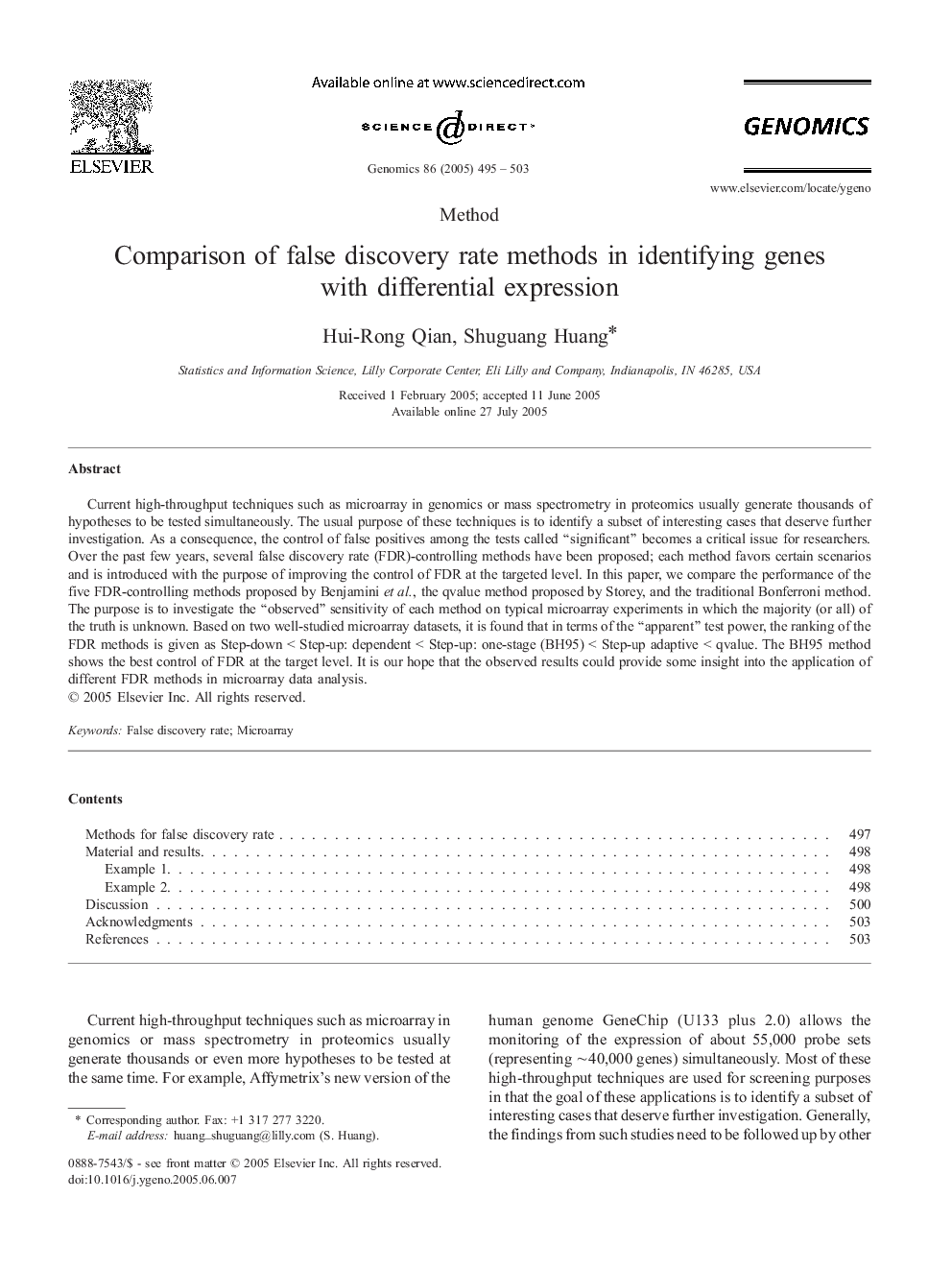| Article ID | Journal | Published Year | Pages | File Type |
|---|---|---|---|---|
| 9131862 | Genomics | 2005 | 9 Pages |
Abstract
Current high-throughput techniques such as microarray in genomics or mass spectrometry in proteomics usually generate thousands of hypotheses to be tested simultaneously. The usual purpose of these techniques is to identify a subset of interesting cases that deserve further investigation. As a consequence, the control of false positives among the tests called “significant” becomes a critical issue for researchers. Over the past few years, several false discovery rate (FDR)-controlling methods have been proposed; each method favors certain scenarios and is introduced with the purpose of improving the control of FDR at the targeted level. In this paper, we compare the performance of the five FDR-controlling methods proposed by Benjamini et al., the qvalue method proposed by Storey, and the traditional Bonferroni method. The purpose is to investigate the “observed” sensitivity of each method on typical microarray experiments in which the majority (or all) of the truth is unknown. Based on two well-studied microarray datasets, it is found that in terms of the “apparent” test power, the ranking of the FDR methods is given as Step-down < Step-up: dependent < Step-up: one-stage (BH95) < Step-up adaptive < qvalue. The BH95 method shows the best control of FDR at the target level. It is our hope that the observed results could provide some insight into the application of different FDR methods in microarray data analysis.
Keywords
Related Topics
Life Sciences
Biochemistry, Genetics and Molecular Biology
Genetics
Authors
Hui-Rong Qian, Shuguang Huang,
